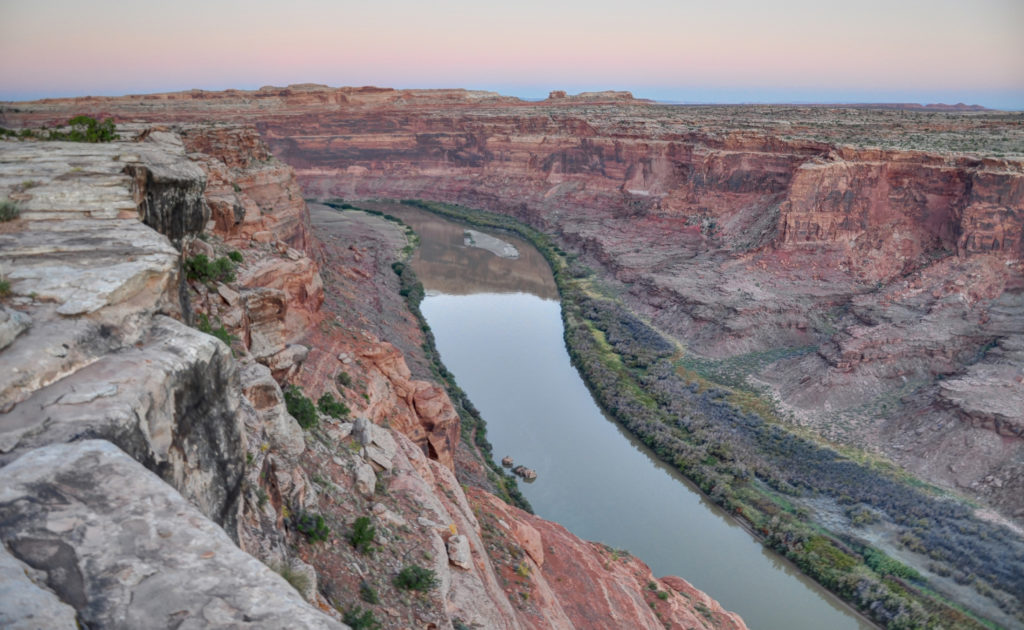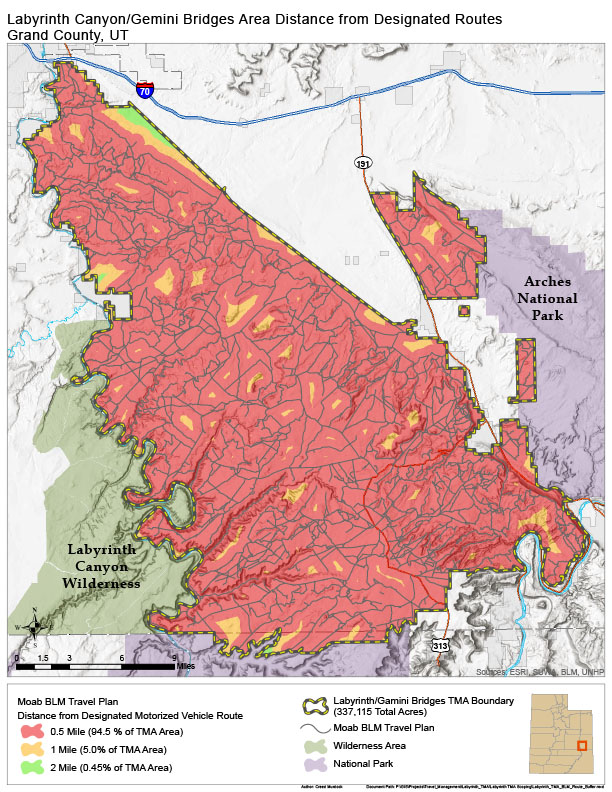The Bureau of Land Management (BLM) is developing a travel management plan for the iconic Labyrinth Canyon and Gemini Bridges area outside of Moab—a plan that will determine where off-road vehicle (ORV) use is allowed in this world-renowned area for decades to come.

Home to irreplaceable cultural and historic resources, important wildlife habitat, and unmatched quiet recreational opportunities, the Labyrinth Canyon and Gemini Bridges region is a magnificent area of Utah’s backcountry. It encompasses the internationally-recognized Labyrinth Canyon section of the Green River, as well as its many side canyons including Mineral, Hell Roaring, Spring, and Ten Mile Canyons.
The area’s unobstructed views, soaring redrock cliffs, and Green River corridor provide endless world-class opportunities for hikers, river runners, canyoneers, climbers, bikers, photographers, and campers. Unfortunately, this area has also experienced a dramatic increase in motorized recreation over the past decade, with ORV noise and dust disproportionately impacting the majority of public land users.
Federal law requires the BLM to minimize impacts to natural and cultural resources when designating motorized vehicle routes. The agency’s current travel plan—pushed through in the waning days of the George W. Bush administration—blanketed the area with ORV routes, prioritizing motorized recreation at the expense of all other public land uses. The high density of ORV routes in the Labyrinth Canyon and Gemini Bridges area means there are few areas to escape the whine of all-terrain vehicles (including the now ubiquitous “utility” models known as UTVs) and dirt bikes.
Currently, 94% of the lands within the Labyrinth Canyon and Gemini Bridges area are within a half mile of a designated ORV route. And less than 1.5% of the lands in this area are two miles or more from an ORV route. As a result, motorized vehicle use is damaging important soil and riparian resources, priceless cultural resources, significant wildlife habitat, and quiet recreational opportunities.
This travel plan will have a long-lasting impact on the future of this region by determining where ORVs will be able to travel, and in turn what areas will be managed for the protection of other resources and values such as wildlife, solitude, and non-motorized recreation.
The BLM is currently in the initial “scoping” phase of its travel planning process, which identifies issues that must be considered. It is vital that the agency hears from the public that the current route network is unacceptable, and that significant route reductions are needed in order to protect public land resources and balance motorized and non-motorized recreation for decades to come.
The BLM should ensure access to trailheads, scenic overlooks, and recreational opportunities, but it must also protect the reason people want to drive here: to enjoy the unspoiled beauty of the Labyrinth Canyon and Gemini Bridges region.
The most helpful comments mention specific trails (by name or number) or areas; how you enjoy hiking, camping, and other non-motorized pursuits in the area; and that motorized use in these places has conflicted with your particular use or enjoyment.
The BLM is accepting comments through April 26, 2021. Be sure to make your voice heard.
Thank you for taking action!


